PORTABLE COMPOUND MICROSCOPE
MAKER: POWELL & LEALAND
MODEL: No 4
DATED: 1855
SIGNED: 'POWELL & LEALAND, 170 Huston Road, LONDON'
Please Click On Any Picture for a Larger Version
DESCRIPTION: This is a fine example of the P & L portable microscope, also known as the the #4. It is not in this collection, and I am grateful to the owner of this microscope for allowing me to use his illustrations. The microscope is signed on the arm: Powell & Lealand, 4 Seymour Place, Euston Square, London
and on the arm under the fine focus knob, with the date of 1855. It comes in a French-polished fitted mahogany case with blue velvet cushions. It is of bar limb construction with rack and pinion coarse focus and long lever fine focus. There is a Turrell type concentric mechanical stage, a very uncommon finding on a folding portable microscope of this era, except for P & L. The three legs fold together. The substage has rack and pinion focusing, along with provision for centering with two knurled control knobs. The optical tube must be removed for storage.
When in the case, the legs, still attached to the rest of the stand, are stored inside the tube.
ACCESSORIES:
Accessories include a stage forceps, achromatic substage condenser, dark well fitting, three objectives with Lieberkuhn reflectors, two eyepieces, livebox, glass trough, and hand forceps. Some models also had provision for rotation of the substage by rack and pinion, but this feature is absent from this model which is earlier.
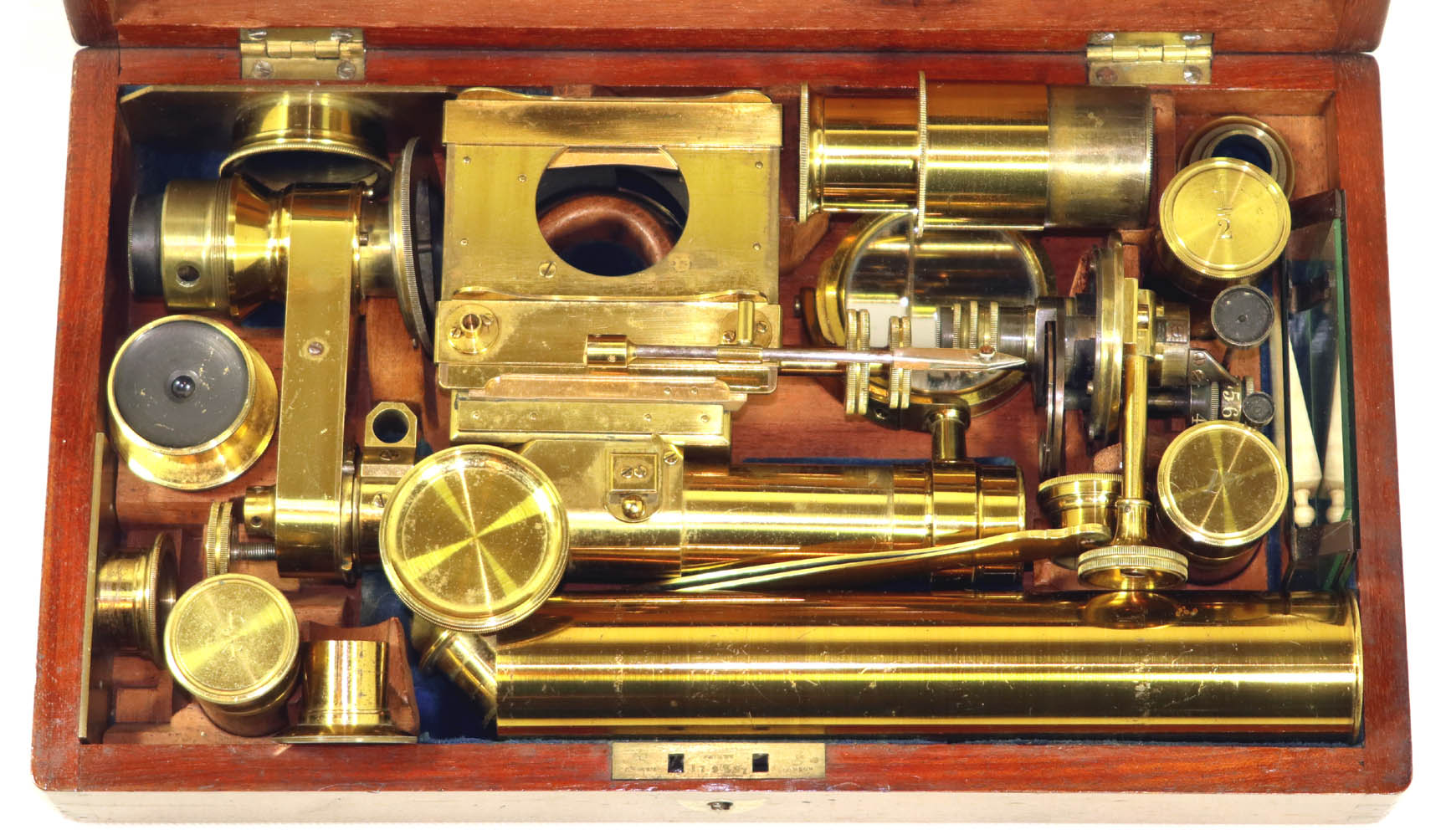
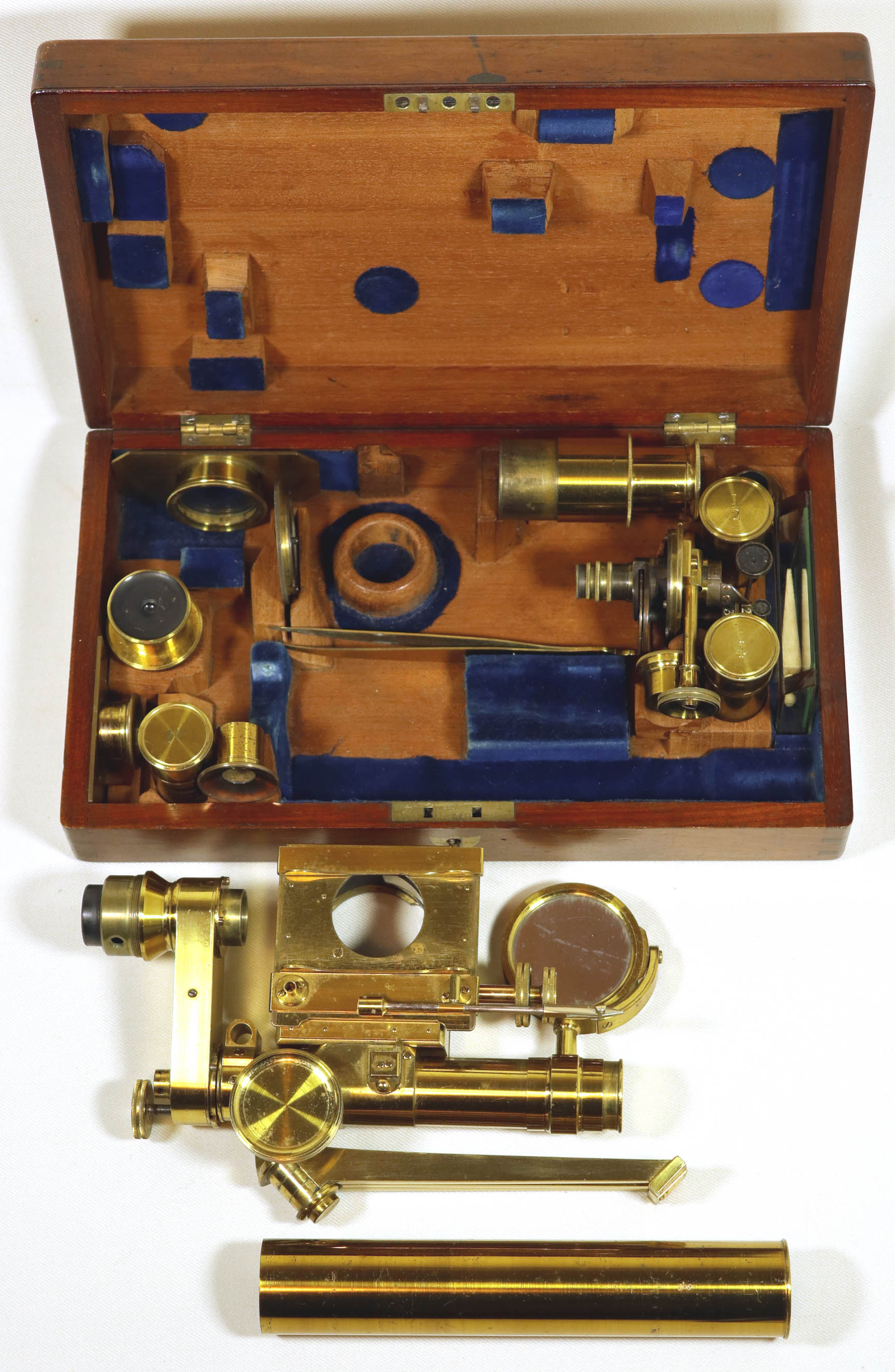
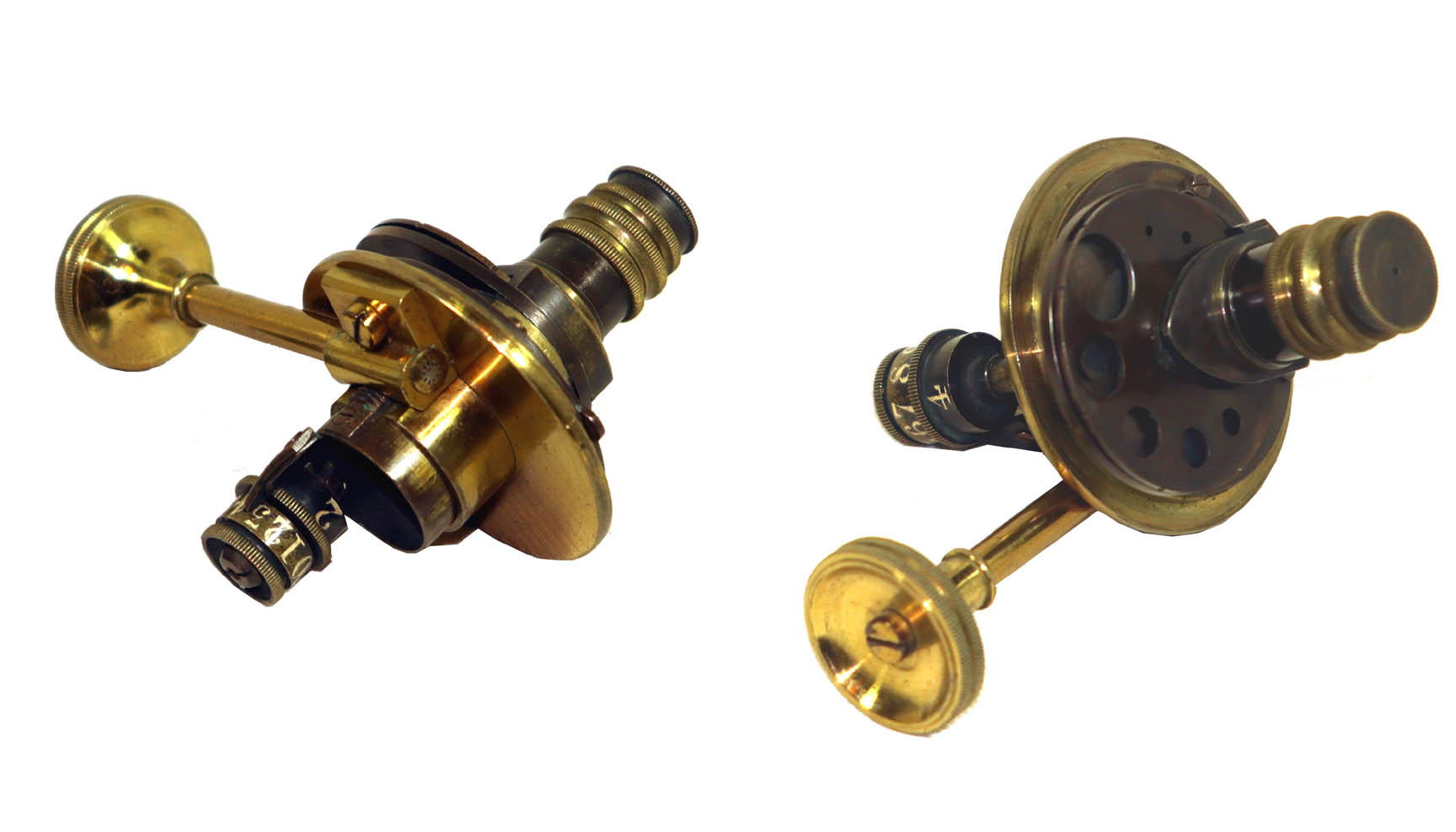
The achromatic condenser, with integrated rack and pinion focusing, attaches to the bottom of the stage via a bayonet fitting.
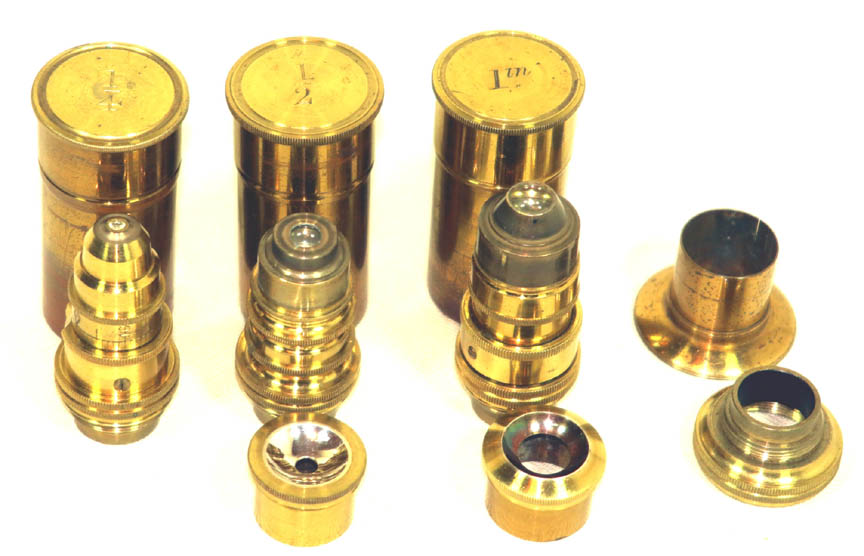
The three objectives with this microscope include a 1/4, 1/2, and 1 inch along with four Lieberkuhn reflectors.
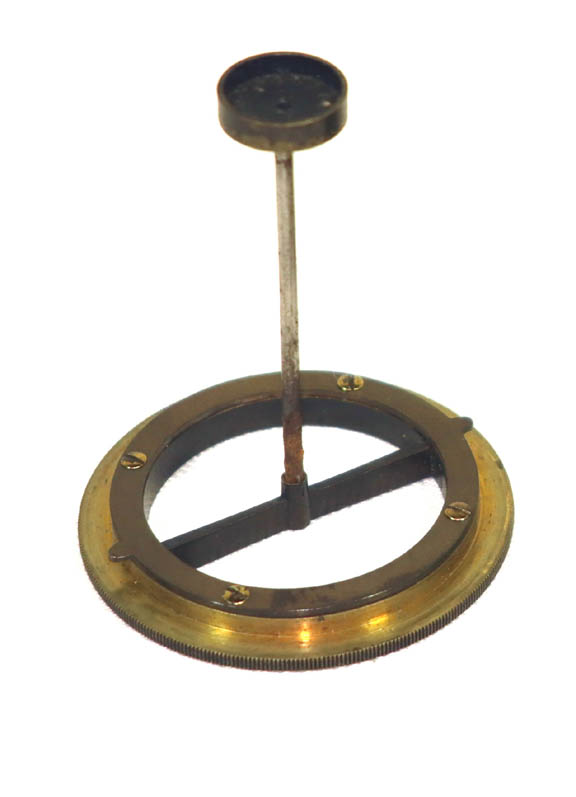
The darkwell holder also attaches to the bottom of the stage via a bayonet mount. There are two different diameter darkwells.
HISTORY OF THE P & L PORTABLE:
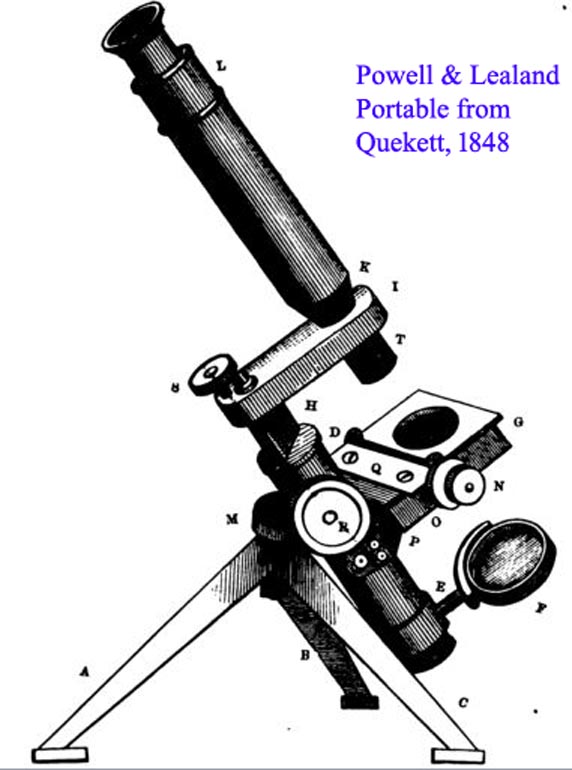
Once the era of the achromatic aplanatic microscope started, it seemed there would be a need for a highly portable yet rugged and well made stand. The model shown on this page certainly filled that bill, and in an even more sophisticated form continued to be produced for the next half century. It is the portable folding microscope by which all others were judged, being exceptionally well made but also very expensive, as it is today.
Not all examples were supplied with as complete a set of accessories, and in some cases, the legs were not stored in the tube. An example of this form is on this site as well and has green felt in the case instead of blue.
The Swift Portable was likely inspired by this model.





